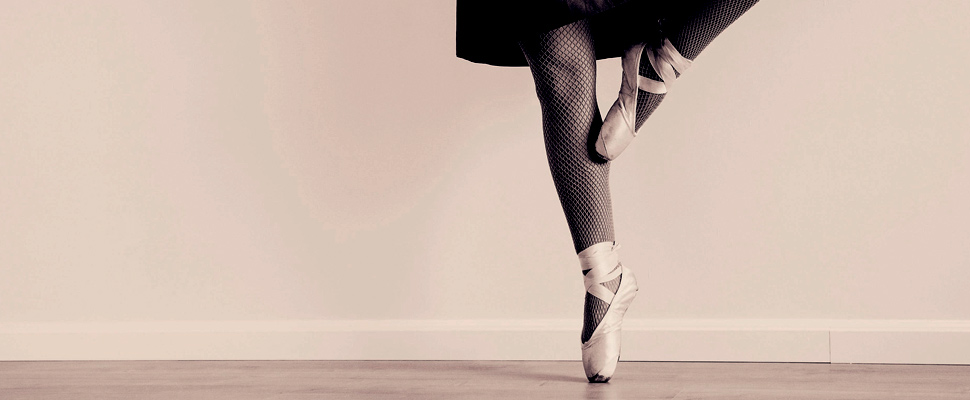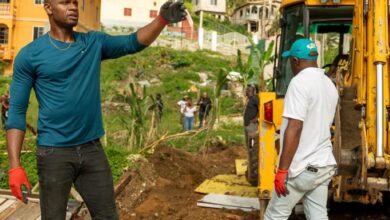Dance and sexual violence: a little explored relationship
This interview with Catherine Busk, conducted during the development of my degree thesis, talks about the importance that the movement can have in treating women victims of sexual violence in the context of the Colombian conflict.

Woman wearing a skirt and practicing ballet. / Photo: Pexels – Reference Image
The Woman Post | Luisa Fernanda Báez Toro
Listen to this article
Leer en español: Danza y violencia sexual: una relación poco explorada
Catherine Busk, a professional dancer graduated from the Central School of Ballet in London, is an expert in classical dance, contemporary dance and Pilates. Since 2011, she works as a dance and movement psychotherapist with various communities, seeking to benefit mental health and cognitive and emotional development through body movement. She currently works as a teacher at the Pontificia Universidad Javeriana, as well as a dance and movement counselor and psychotherapist at the Life Project Foundation in Soacha.
The Woman Post: What does the body tell us about our metal state and our physical health?
Catherine Busk: I strongly believe in what many of the therapy dance theories say and that a change in a pattern of movement can also mean a change in the psyche, so then the mental state will clearly be reflected in many cases in the body.
As for what is said about Laban, if there is very little range of movement, few qualities or possibilities of movement, it usually means that this person is in a trapped state, so it may be that she is reflecting a very stagnant, troubled mind . Clearly if you look for it, clinical depression and clinical schizophrenia have tendencies of certain movement patterns. A person with a clinical depression usually has a less active movement, is more passive and sustained, more content and with a lighter weight, often due to antipsychotics, which affect movement by inhibiting neurons.
I think that a body that is not healthy reflects a mind that is not healthy and, necessarily, we must talk about the nonverbal language. The body speaks without words about the mental state. Only we justify a lot with the word. Therefore, it seems to me that the work, the intervention with the body are extremely powerful, because one is going to a nonverbal level so one defends himself with all the words of the world. The body reveals the real state of the being.
TWP: Can you explain to me what exactly the Laban technique is?
CB: Laban is a methodology, an analysis of a man's movement called Rudolf von Laban. Specifically he, among many other things, built a methodology to analyze the movement. The relevance of this is that he, through the studies, named four efforts of movement that are time, space, weight and flow and likewise each effort has a polarity and those are our ranges of motion.
Also read: Historical convictions of priests for sexual abuse
That is to say, a person who can manage and self-regulate well, his mental part, his mental health, will have access to these eight polarities, that is, his relationship between time, space, weight and flow can fluctuate depending on the context: the context asks certain movement profile and the person can perform them.
Then, in his most recent studies, he joined a couple of psychoanalysts and connected the efforts with the four concepts of consciousness. If I am a person with many limitations in my range of motion, which is related to what Jung referred to in consciousness as thinking, feeling, intuiting and sensing , these parts of my consciousness will also be underdeveloped. Based on that, we have been able to verify that through interventions that are made through the body, say in dance and movement, we can amplify the range of movement and at the same time amplify the way in which we are able to be aware, connecting it with the concepts of Jung
TWP: How, then, can movement become an instrument of struggle and healing?
CB: It is already proven that trauma is stored in the memory of the cells; that is, if I have a physical experience, about my body, these cells will remember it, then of course the intervention cannot only be verbal, but through the body I have to re-build my patterns, my way of moving, my world.
I am not very fan of the word healing because I believe that there are wounds that do not heal, I simply perceive that the power of the body, movement and dance is to be able to self-regulate. If something totally traumatic like a rape has happened to me, I don't know if one heals it, but through a type of therapy that works with the body, you can deal with that trauma instead of letting that trauma handle you. It has to do with being well with what you have experienced, which is part of the person.
TWP: Do you think the Colombian government has failed in terms of reparation for women victims of sexual violence?
CB: I have worked in this country since 2008 with children in very complex sectors, people who have demobilized, people who have lived all their lives in a neighborhood with very precarious conditions and within that I have worked with women who have been raped, many, pitifully.
Also read: Where is it safe to be a woman in the world?
Although I don't feel the most suitable person talking about armed conflict, I have had contact with many people affected by violence. I can't tell you about women victims in the conflict, but about women victims of rape. Specifically working four years in a neighborhood between Soacha and Sibaté, an illegal neighborhood where there is a lot of influence from the Bacrim, rape is normalized and there are very few resources for prevention and for the after.
TWP: What tools do you use when entering a practice with female victims?
CB: These women have revealed what has happened to them already after a long time and many sessions. It has been difficult because consistency is very regular, which means that the process with the body is much slower. But for me it is going back to the basic exercises that promote the eight qualities of movement. I have to read people in terms of their movement, in terms of what they bring.
People want to go to the word very fast because there is something very delicate with the body and it is their turn to review the sensations, while the word saves them from doing this job. You have to encourage a series of exercises that can communicate what's in your body without feeling too exposed. Sensitivity and listening are the basis of the intervention with the body.





